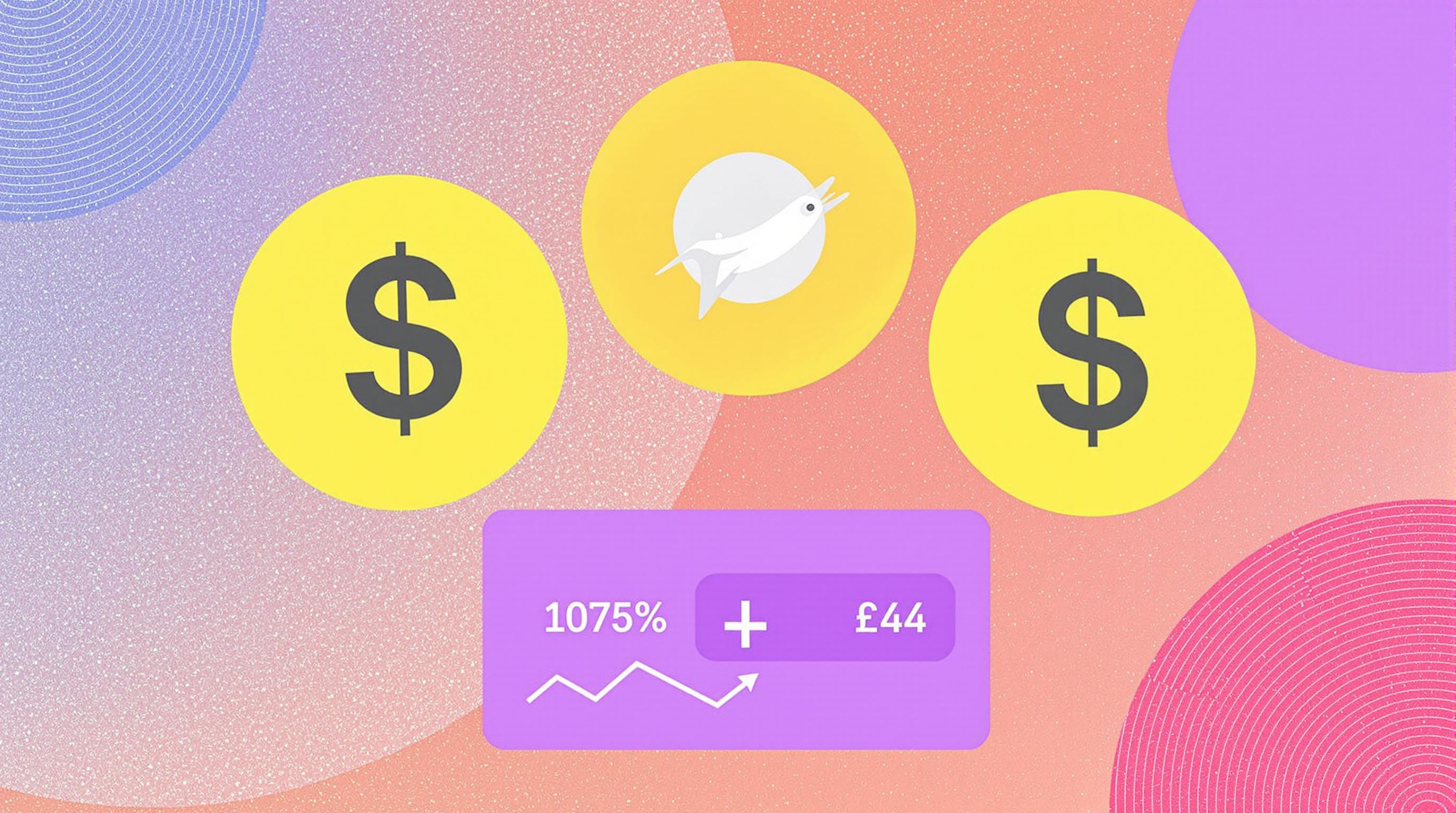Related Articles
- When Creditors Turn Aggressive: Navigating the Legal Gray Zones of Unconventional Debt Collection Practices
- Top 7 Innovative Credit Tracking Apps From the Past Five Years That Are Redefining Financial Control
- How Shifting Debt Across Cards Influences Consumer Behavior Patterns Few Analysts Ever Consider
- Top 5 Lesser-Known Debt Management Apps From the Last 5 Years That Actually Outperform Classic Snowball Methods
- Unlocking the Quiet Power of Micro-Investments in Alternative Assets to Shift Your Financial Reputation Gradually
- 7 Revolutionary Secured Loan Solutions Debuting Since 2019 That Tackle Risk Differently and Boost Borrower Confidence
5 Little-Known Behavioral Hacks That Supercharge Your Debt Snowball Progress Without More Income
5 Little-Known Behavioral Hacks That Supercharge Your Debt Snowball Progress Without More Income
5 Little-Known Behavioral Hacks That Supercharge Your Debt Snowball Progress Without More Income
Paying off debt can feel like a daunting task, especially when income remains stagnant. The debt snowball method—paying off the smallest debts first to build momentum—is proven effective, but what if you could accelerate your progress without increasing your income? Behavioral science offers clever hacks that leverage psychology to boost your debt payoff game. This article explores five little-known behavioral tricks to supercharge your debt snowball progress using smart mindset shifts and small habit adjustments.
Understanding the psychology behind money management can transform your approach to debt repayment. These hacks focus on rewiring your mindset and daily behaviors to reinforce commitment, reduce temptation, and harness positive reinforcement. No need to scramble for side gigs or extra earnings—just smarter mental strategies.
Let’s dive into each hack and discover how simple psychological adjustments can make a big difference in shrinking your debt faster.
1. Mental Account Segregation
Mental accounting is a concept where people categorize funds into separate “buckets” mentally, affecting how they spend and save. Applying this to your debt snowball can increase the psychological impact of your payments.
Try creating discrete mental accounts for each debt. When you make a payment, visualize closing off that specific bucket. This visualization provides a sense of accomplishment beyond mere numbers, making progress feel more tangible and rewarding.
This technique boosts motivation by framing payments as wins rather than just routine expenses. According to behavioral economist Richard Thaler, mental accounting changes spending behavior by making certain "accounts" feel more valuable, which you can harness to accelerate debt payoff.
(Source: Thaler, R. H. "Mental Accounting Matters", Journal of Behavioral Decision Making, 1999)
2. Implementation Intentions for Payment Dates
Implementation intentions are "if-then" plans that help automate behaviors. Instead of vaguely intending to make a debt payment, set clear, specific plans like "If it is the 15th, then I will schedule my debt payment immediately."
This mental prepping reduces procrastination by linking repayment actions to concrete triggers. It shifts payment from a chore to an automatic habit, preserving willpower and preventing forgetfulness or delay.
Studies in psychology show that forming implementation intentions significantly improves the likelihood of executing intended behaviors. This simple mental hack makes debt snowball steps vastly more consistent.
(Source: Gollwitzer, P. M. "Implementation Intentions: Strong Effects of Simple Plans", American Psychologist, 1999)
3. Celebrate Micro-Wins Publicly
Debt repayment is often a private battle, but introducing social accountability and celebration can supercharge motivation. Share small victories, such as fully paying off a credit card, with friends or on social media.
Public acknowledgment taps into the human desire for recognition and acceptance, reinforcing positive behaviors. By celebrating micro-wins openly, you create external incentives to maintain momentum, enhancing commitment to your debt goals.
Research in social psychology supports that public commitments increase follow-through on intentions. Even simple acknowledgment from peers can create powerful motivation to keep progressing.
(Source: Cialdini, R. B. "Influence: The Psychology of Persuasion", 2006)
4. Use Negative Visualization to Increase Gratitude
Negative visualization involves imagining a worse financial scenario, which paradoxically increases appreciation for your current resources and boosts motivation to avoid debt.
By contemplating what life would be like with heavier debt burdens or no progress, you become more driven to stick to your repayment plan. This method nurtures gratitude and bolsters your resolve, turning aversion into sustained action.
Stoic philosophers have long advocated this technique for perspective and motivation. Modern psychology confirms that brief exercises in negative visualization reduce impulsivity and increase self-control.
(Source: Emmons, R. A. & McCullough, M. E., "Counting Blessings Versus Burdens", Journal of Personality and Social Psychology, 2003)
5. Anchor Your Financial Identity to Being Debt-Free
Your self-identity shapes behavior deeply. Anchoring your identity to a debt-free future makes your daily payments congruent with who you believe you are or want to become.
Define yourself as “someone who lives debt-free” and reinforce this self-concept daily through affirmations or visualization. This identity anchoring aligns actions with long-term goals, turning repayment into a natural expression of self rather than a forced chore.
Identity-based motivation theory shows that behaviors aligned with personal identity are more likely to be undertaken and sustained over time.
(Source: Oyserman, D. "Identity-based motivation and health", Journal of Personality and Social Psychology, 2009)
6. Create Visual Progress Trackers
Visual tools like charts, graphs, or checklists can enhance motivation by making progress concrete and visible. When debt balances decrease, marking milestones on a tracker boosts morale and signals progress.
This visual feedback satisfies the brain’s craving for tangible achievements and accountability. It can lower feelings of overwhelm by breaking down big goals into manageable steps.
Research in goal-setting theory highlights that specific, measurable feedback improves persistence and goal attainment.
(Source: Locke, E. A. & Latham, G. P., "Building a practically useful theory of goal setting and task motivation", American Psychologist, 2002)
7. Habit Stacking Payment Rituals
Build your debt payment habit by stacking it onto an existing, well-established habit. For example, immediately after brushing your teeth in the evening, schedule your debt payment or review your balances.
Habit stacking reduces cognitive load by linking new actions to old neural pathways, making behaviors near automatic. Over time, this ritualized approach strengthens consistency and reduces slip-ups.
Behavioral habit research confirms that coupling new habits with existing routines increases adoption success.
(Source: Clear, J. "Atomic Habits", 2018)
8. Limit Exposure to Tempting Spending Triggers
Behaviorally, reducing temptation is easier than relying on willpower alone. Identify stores, websites, or social situations that trigger impulsive spending and limit your exposure.
For example, unfollow social media accounts that encourage purchases or uninstall shopping apps. This lowers the cognitive burden of resisting temptation, freeing mental energy for your debt goals.
Research on impulse control supports limiting environmental triggers to reduce poor financial decisions.
(Source: Baumeister, R. F. & Vohs, K. D., "Self-Regulation and the Executive Control of Behavior", 2007)
9. Reframe Debt Payment as Self-Care
Instead of viewing debt payment as punishment, reframe it as an act of self-care and empowerment. Treat yourself kindly by recognizing each payment as an investment in your future wellness and freedom.
This positive reframing reduces negative emotions associated with money stress and increases intrinsic motivation. You’re not depriving yourself; you’re nurturing financial health.
Affective neuroscience shows that positive emotions build resilience and sustain goal pursuit more effectively than fear or shame.
(Source: Fredrickson, B. L. "The role of positive emotions in positive psychology", American Psychologist, 2001)
10. Automate Micro-Payments to Build Momentum
Even small auto-debits toward your debts, set up and forgotten, create a snowball effect. These micro-payments build repayment momentum without conscious effort, reducing temptation to spend the funds elsewhere.
The automation leverages inertia in your favor—once habits start, they’re less likely to stop. It also obviates procrastination and decision fatigue.
Behavioral finance experts advocate automating savings and repayments as a proven way to improve financial outcomes.
(Source: Thaler, R. H. & Sunstein, C. R. "Nudge", 2008)
Conclusion: Leveraging behavioral hacks can transform your debt snowball progress without the challenge of earning more. Mental accounting, implementation intentions, social celebrations, negative visualization, and identity anchoring are powerful tools that reshape your mindset and habits. Combined with practical steps like visual tracking, habit stacking, and automation, you create an environment where debt repayment feels less daunting and more rewarding. Small shifts in psychology translate to accelerated payoff and pave the way to lasting financial freedom.




